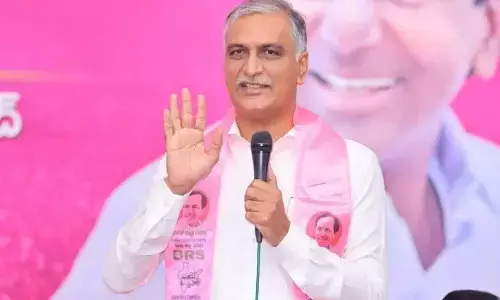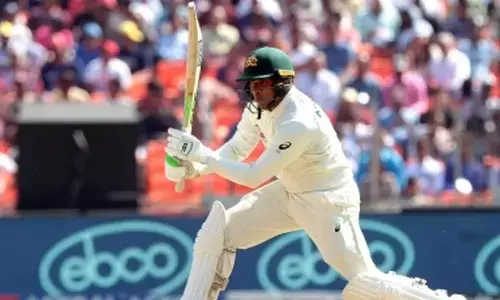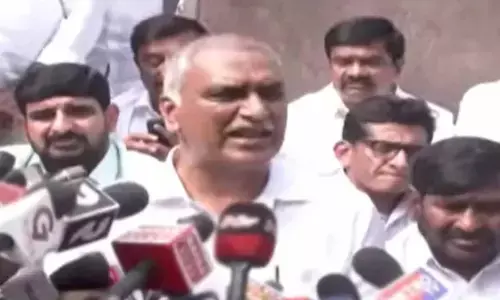Conservation Professionals: Guardians of Bharat’s Heritage

Bharat’s cultural heritage spans millennia, including ancient temples, forts, palaces, and colonial buildings.
Bharat’s cultural heritage spans millennia, including ancient temples, forts, palaces, and colonial buildings. However, these sites are vulnerable to ravages of time, natural disasters, and human neglect. Conservation professionals play a crucial role in protecting and preserving Bharat’s heritage for future generations. They work tirelessly to protect and preserve country’s valuable historical monuments, archaeological sites, art, and traditions, highlighting the challenges they face in their mission to safeguard India’s legacy.
There are around 200 conservation and restoration labs, located in various institutions like museums, universities, and government agencies. These labs play a crucial role in preserving India’s cultural heritage, offering services such as art conservation, archaeological artifact restoration, architectural materials preservation, and natural history specimens restoration. The largest and most well-equipped labs include the National Research Laboratory for Conservation of Cultural Property, INTACH Conservation Centre, ASI Conservation Laboratory, CRIMT, and National Museum of India Conservation Laboratory.
Conservation professionals are responsible for protecting and preserving cultural heritage sites through surveys, assessments, and conservation plans. They carry out restoration work using traditional and modern techniques, monitor and maintain sites for long-term preservation, and educate the public about heritage conservation and sustainable tourism practices.
Conservation professionals are responsible for India’s heritage preservation, working across various disciplines such as archaeology, architecture, art restoration, and museum curation. They focus on restoration and preservation of historical sites and artifacts using scientific methods, traditional techniques, and craftsmanship. They also conduct meticulous documentation and research, enhancing our understanding of the past and aiding in informed conservation decisions. They also develop preventive measures, such as environmental controls and educational programs, to prevent further damage to heritage sites. They also raise awareness about heritage conservation through workshops and outreach.
Conservation and restoration are crucial for preserving cultural heritage. Conservation maintains the original state of a building, object, or landscape without altering its fabric, while restoration restores it to its original state. Conservation is generally preferred over restoration, but restoration may be necessary in severe cases, such as when a building has been severely damaged or destroyed.
Challenges Faced by Conservation Professionals
Conservation professionals in the country face numerous challenges, including insufficient funding, a shortage of skilled labor, bureaucratic hurdles, rapid urbanisation and development, climate change and pollution, and public awareness. Insufficient funding is a major issue, as conservation projects require substantial investments in equipment, skilled labor, and research. Skilled labor is also scarce, hampering the effective preservation of heritage. Bureaucratic hurdles are a time-consuming and frustrating process, as many heritage sites fall under government control. Rapid urbanisation and infrastructure development often encroach on historical sites, making conservation efforts difficult. Environmental factors like pollution and climate change pose significant threats to heritage sites and artifacts. Public awareness is also a challenge, as many communities remain unaware of the value of their heritage. Rapid economic development and climate change also pose threats to heritage sites, posing potential damage or destruction.
Conservation professionals in India are dedicated to protecting and preserving the country’s rich heritage through research, advocacy, and conservation work. The Indian National Trust for Art and Cultural Heritage (INTACH) estimates around 1,000 conservation professionals, including architects, archaeologists, conservators, and heritage managers. However, the actual number is likely to be higher due to informal or voluntary roles. The number of conservation specialists is growing due to increased awareness of conservation, with more universities offering conservation courses and more government and non-government organisations. However, there is still a shortage of qualified professionals due to the relatively new nature of conservation in India and the lack of training opportunities. The status of conservation as a career in India is evolving, but there is still a shortage of qualified individuals.
The country offers various conservation courses at universities and colleges, covering wildlife biology, ecology, natural resource management, and heritage conservation. The quality of these programs varies, with some offering world-class education and others less rigorous. Conservation professionals require skills like strong scientific knowledge, field research, data analysis, communication, writing, teamwork, and leadership, as well as effective collaboration with stakeholders like government officials, local communities, and businesses.
The employment prospects for conservation professionals are promising due to increased investment from government and non-government organisations. They can work in various sectors, including government agencies, non-government organisations, research institutions, and consultancy firms. Salary varies based on experience level, with entry-level professionals earning INR 20,000-30,000 and experienced professionals up to INR 1 lakh per month.
Conservation professionals in India face challenges such as low salaries, limited job security, challenging working conditions, and lack of awareness, yet they find it rewarding to protect India’s natural and cultural heritage.
To enhance conservation as a career in India, government and private organisations should invest in conservation education, create more permanent jobs for conservation professionals, increase salaries, and raise public awareness of conservation issues. These measures will ensure a pipeline of qualified professionals, attract and retain qualified individuals, and create a supportive environment for conservation professionals. By implementing these measures, India can ensure the protection of its natural and cultural heritage for future generations.
Conclusion
Conservation professionals play a crucial role in safeguarding India’s heritage, but face numerous challenges. Their tireless efforts ensure the preservation of the nation’s past for future generations. Recognising their dedication and addressing their challenges is essential for the continued preservation of India’s rich cultural heritage, paying homage to unsung heroes.
(The writer is an Assistant Director, Telangana State)








